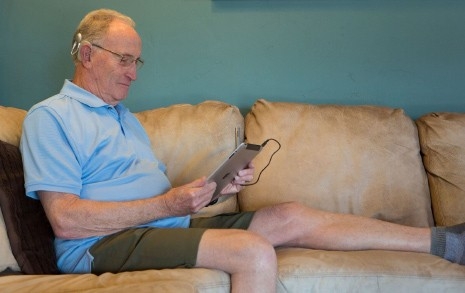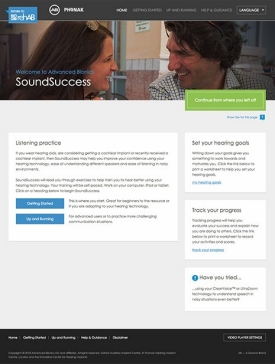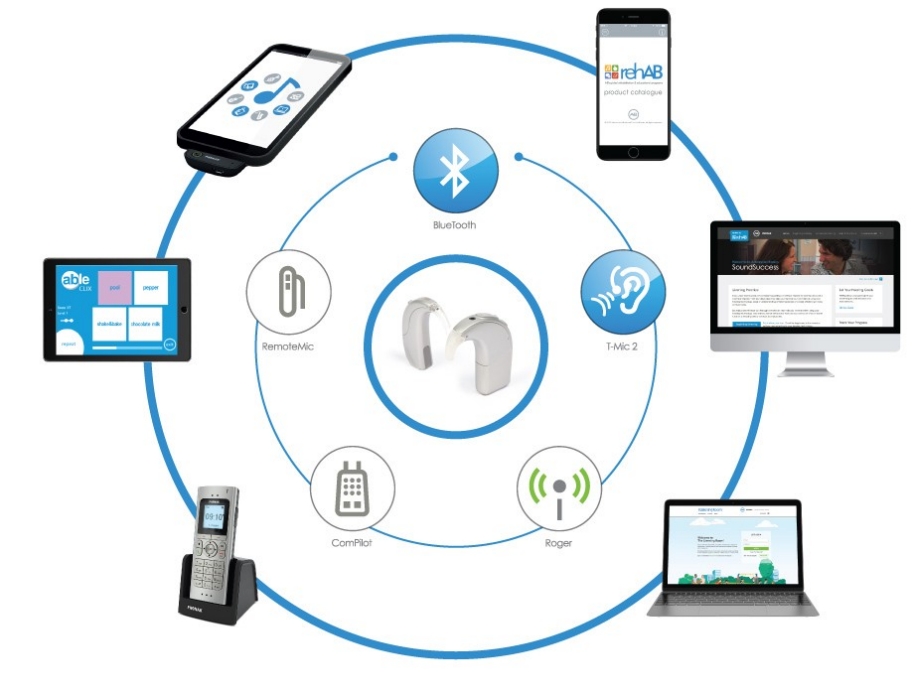
Customized Support… Anywhere, Anytime!
Whether experiencing sound for the first time through hearing aids and/or a cochlear implant or have used hearing devices for many years, making the connection to understanding with your devices is something that takes time and practice. You can maximize your success by having up to date knowledge, the latest technology facts, resources and individualizing your rehabilitation!
Don’t Miss Another Minute

Communicate with Confidence
If you’re struggling to hear in noisy settings, talk with your loved ones on the phone, listen to your favourite songs, or contribute your talents at your workplace, you might need a little practice to get the most out of your hearing devices.
Research has shown that adults may benefit from online hearing training to get back into community life.

Take a look at… SoundSuccess
This interactive, online functional listening training can help you to:
- Train your brain’s ability to perceive and understand spoken language
- Enhance your ‘real world’ listening and communication by listening to different speakers with different voices and dialects, in quiet and in noise, talk about everyday topics and contexts.
- Boost your confidence by training in a safe environment and getting feedback on your performance
- Track your functional hearing status over time
Connect to Online Support…
Any Device, Any Where!
Maximising the potential of your Advanced Bionics technology and wireless capabilities

Technology… working for you
Join experts to learn more about the unique AB & Phonak technologies working together to make communication in the real world easier. Or learn from the experience of someone who has walked in your shoes!
Explore and Select the Best Resources For You!
Finding time to practice listening and getting the most from your technology doesn’t have to be a chore. Take a few minutes when it’s most convenient for you, like when you’re traveling to work, during your coffee break, or when you’re relaxing in the evening. Teaching your brain to listen again through a hearing device takes commitment, perseverance and a positive attitude.
An exciting range of flexible support resources are specifically designed to help you enhance your communication skills as you go about your day and listen to the sounds around you. Find a variety of activities you can tailor to a suitable degree of difficulty to independently strengthen your listening skills on The Listening Room. Or train to hear the differences between vowels and consonants using the free able CLIX app.
For some adults with a cochlear implant, re-discovering music can be a difficult process, requiring patience and time, but don’t give up! Musical Atmospheres can help you fully appreciate the music embedded in everyday life again.
Reference
Ferguson M. et al., (2016). A Randomized Controlled Trial to Evaluate the Benefits of a Multimedia Educational Program for First-Time Hearing Aid Users. Ear Hear. Mar; 37(2): 123–136.
Malmberg, M. et al. (2017). Evaluating the short-term and long-term effects of an internet-based aural rehabilitation programme for hearing aid users in general clinical practice: a randomised controlled trial. BMJ Open. Jun 6;7(5):e013047. doi: 10.1136/bmjopen-2016-013047
Paula C. Stacey, P.C. et al. (2010). Effectiveness of computer-based auditory training for adult users of cochlear implants. Int J Audiol. 49:5, p 347-356.
Sabes, J.H. & Sweetow, R.W. (2007). Variables predicting outcomes on listening and communication enhancement (LACETM) training (LACE™) Int J Audiol, Volume 46(7): 374-383.
Sweetow R.W., Sabes J.H. (2006) The need for and development of an adaptive Listening and Communication Enhancement (LACE) Program. J Am Acad Audiol. 2006 Sep;17(8):538-58.